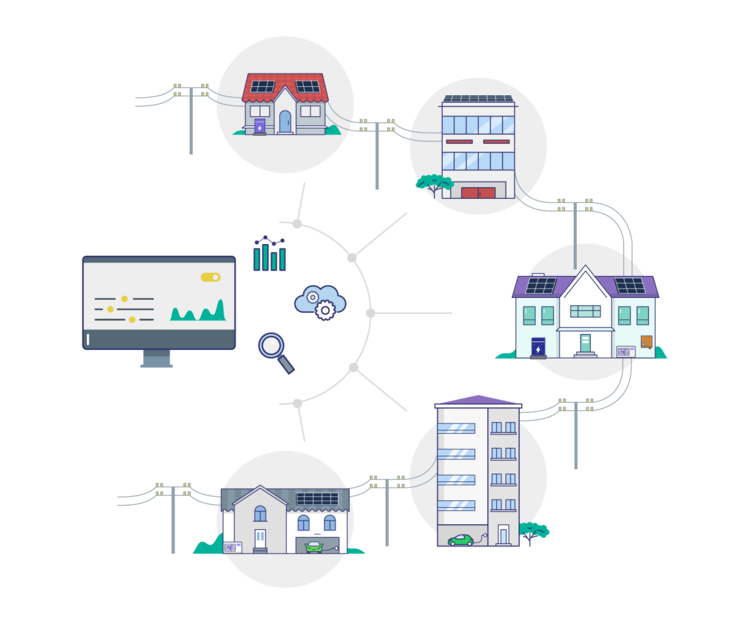When it comes to the future of energy, the only way we’re going to be able to replace fossil fuels completely is to build a jigsaw puzzle of renewable energy sources. In doing this, we build a grid that is more reliable, stable and sustainable than ever before. Diversifying energy resources creates certainty and stability in the grid, but requires a big evolution in how we manage and distribute grid resources. This is known as the distributed energy grid.
In Europe, over 90% of renewable energy generated is part of the distributed energy network. This trend shows no signs of slowing down due to its evidence-based success in amassing energy production from various different types of sources and managing a grid much more complex than the traditional factory to home style. It offers massive advantages in managing demand response. SwitchDin, a company from Newcastle, Australia has developed a series of smart sensors to take distributed energy to the next level.
A Fragmented Market

We had the pleasure of speaking with SwitchDin CEO and Co-Founder, Andrew Mears PhD, at the World Energy Congress in Abu Dhabi. He filled us in on the details regarding the current state of SwitchDin and the challenges renewable energy faces. “Well the problem we’re solving is that the technology and products that make up this asset base, the solar PV inverters, and the battery inverters, it’s a very fragmented market. There’s a lack of standards to allow interconnection, and even the standards that are there aren’t uniformly implemented, but also even with standards in place, the way we manage and optimise these systems, changes depending upon the products, so we basically enable a utility to take a battery and solar agnostic approach to building aggregated services.”
In traditional grid setups, the demand is dictated by the users. Our misinformed perception of the endless supply of fossil fuels meant that we burned as much energy as was in demand at that time. This fluctuated throughout the day. With the transition to a renewable energy grid, the nature of renewable sources of energy means that there is less stability in predicting when our fuels will be available. For example, the Sun is only in the sky for 12 hours per day, wind speeds are generally not consistent unless the wind turbine is in, say, Antarctica. This means that managing renewable energy sources provides new challenges.
From Each StormCloud Comes Many Droplets

The main tool SwitchDin distributes to create more cohesion in energy grids is its Droplet. It’s a one-size-fits-all capacitor for home and industrial use, providing a way to manage energy from a number of different sources. The unique thing about this tool is its ability to act as a medium between a variety of different sources, from solar to batteries, even when those generators are from different manufacturers. The SwitchDin team likens the Droplet to a ‘babelfish’ for energy production.
“It’s a little gateway device. We build in there all the software we need to talk to almost all the batteries and solar PV systems in the market. As well as power meters, as well as air conditioners and EV charge points. We put all the software in there, and, as well, we include in there the advanced control and machine learning that allows us to optimise the way the site works,” said Mears.
Each Droplet serves as a gateway into Stormcloud, SwitchDin’s vendor agnostic, cloud-based server, which manages demand response. The Stormcloud aggregates the information coming in from the Droplets, linked up to the renewable energy grid in someone’s home or in a factory, and allows end-users to manage, predict and plan the energy availability coming through the renewable grid.
A Bright Future for SwitchDin
The future looks bright for SwitchDin. It has already implemented its tools with three of the four major energy companies in Australia, started building a presence in Europe and dipped its toes across the pond into North America. The strategy the company is taking is to build a device usable for individual consumers and embedding it within major technologies to get its gateway into as many locations as possible. The company has closed its Series A funding at €3.1 million ($5 million AUD).
“Australia is our home market, Australia is really the best place in the world to be doing this now. It’s the test market for the world really, because of the high penetration of solar, the high cost of electricity, and we have a very educated consumer. So it’s a great place to be building this type of product,” said Mears.


